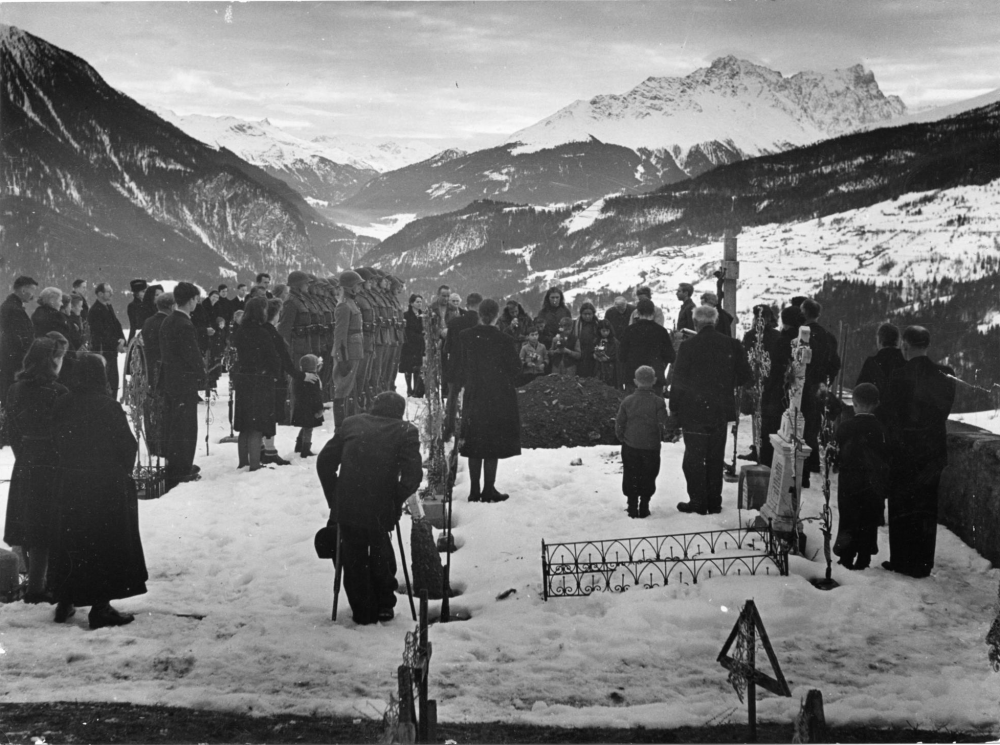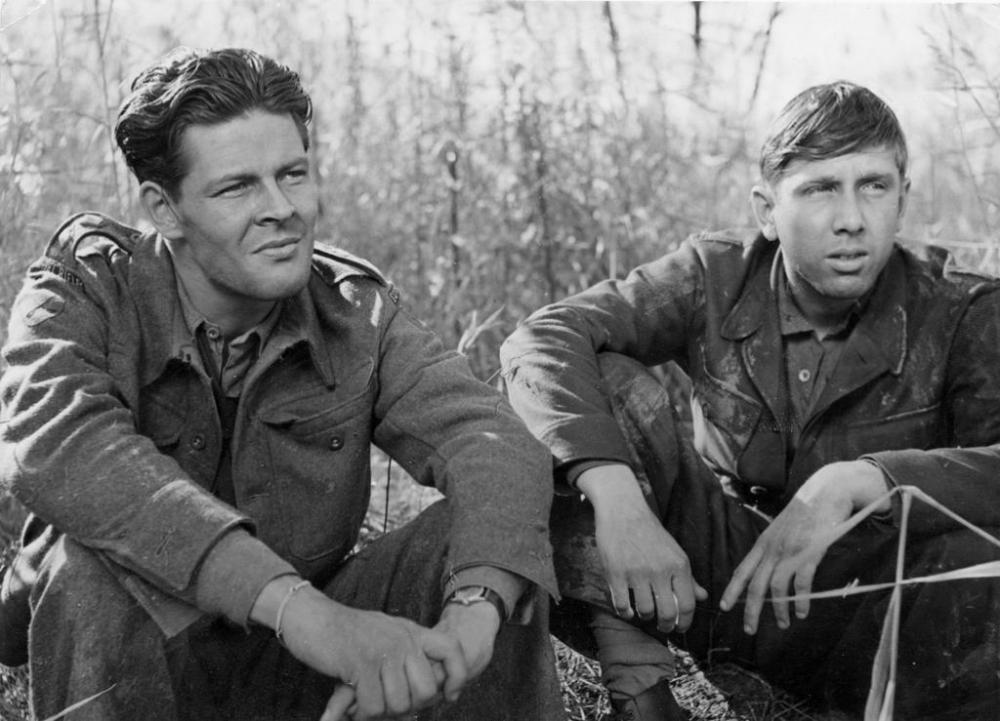The Last Chance
Italy, 1943. Among escaped prisoners, an Englishman and an American try to reach Switzerland. Aided in their efforts by an English pilot, they help a group of refugees from ten different nations to reach the country. One man's sacrifice will enable the whole group of survivors to reach freedom.

Praesens Film AG
(selection):
- Golden Globe 1947- Best Film Promoting International Understanding
- Festival de Cannes 1946 - Grand Prix
- National Board of Review, USA - Top Ten Film of 1945
(selection):
- Berlin International Film Festival 1990
- Locarno International Film Festival 1984
Presens-Film
Northern Italy, September 1943. Two allied prisoners of war, an Englishman and an American, escape when the train transporting them to Germany is bombed. Taken in by a village priest who smuggles into Switzerland everyone trying to escape the Germans, the two prisoners become smugglers in turn, leading a group of Jewish refugees of all ages and ten different nationalities. With the Nazis in pursuit, they try to reach Switzerland over the mountains... Coming a year after Marie-Louise, it marks a new oeuvre for Leopold Lindtberg: a deeply humanist film on the theme of war refugees in Switzerland. Winner of a Grand Prix at the Festival de Cannes in 1946, Die letzte Chance was a success around the world and established the importance of the Swiss director internationally. “In its dignity, this film transcends mere realistic testimony to become an allegory: that of seeking refuge, a homeland. If only for that, Die letzte Chance deserves its place as a classic among prominent postwar films” (Hervé Dumont, Histoire du cinéma suisse, 1987).
Filmed at the height of the war and rather in opposition to the Swiss government's stance towards refugees, especially Jews, Die Letzte Chance is perhaps one of the few Swiss-German films during that era that give a less touristy and more truthful image of Ticino. Even though there is no mention of Ticino. In fact, Ticino is used as a backdrop to represent Northern Italy, which, as we see in the film, directly borders the Alps and German-speaking Switzerland. The image the film gives of these landscapes of lakes and mountains is very evocative.
Frédéric Maire, Director Cinémathèque suisse


















